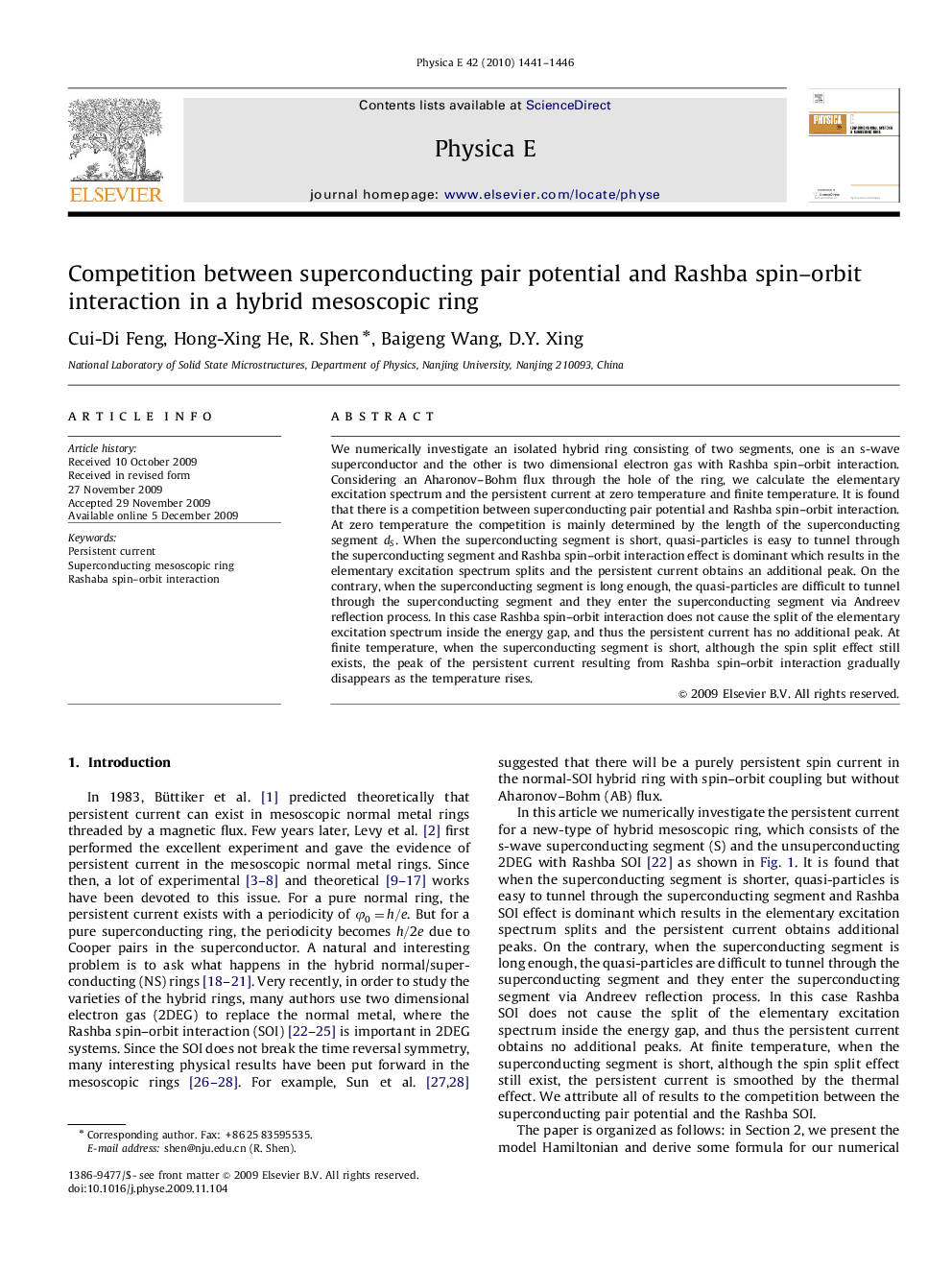| Article ID | Journal | Published Year | Pages | File Type |
|---|---|---|---|---|
| 1546176 | Physica E: Low-dimensional Systems and Nanostructures | 2010 | 6 Pages |
We numerically investigate an isolated hybrid ring consisting of two segments, one is an s-wave superconductor and the other is two dimensional electron gas with Rashba spin–orbit interaction. Considering an Aharonov–Bohm flux through the hole of the ring, we calculate the elementary excitation spectrum and the persistent current at zero temperature and finite temperature. It is found that there is a competition between superconducting pair potential and Rashba spin–orbit interaction. At zero temperature the competition is mainly determined by the length of the superconducting segment dSdS. When the superconducting segment is short, quasi-particles is easy to tunnel through the superconducting segment and Rashba spin–orbit interaction effect is dominant which results in the elementary excitation spectrum splits and the persistent current obtains an additional peak. On the contrary, when the superconducting segment is long enough, the quasi-particles are difficult to tunnel through the superconducting segment and they enter the superconducting segment via Andreev reflection process. In this case Rashba spin–orbit interaction does not cause the split of the elementary excitation spectrum inside the energy gap, and thus the persistent current has no additional peak. At finite temperature, when the superconducting segment is short, although the spin split effect still exists, the peak of the persistent current resulting from Rashba spin–orbit interaction gradually disappears as the temperature rises.
